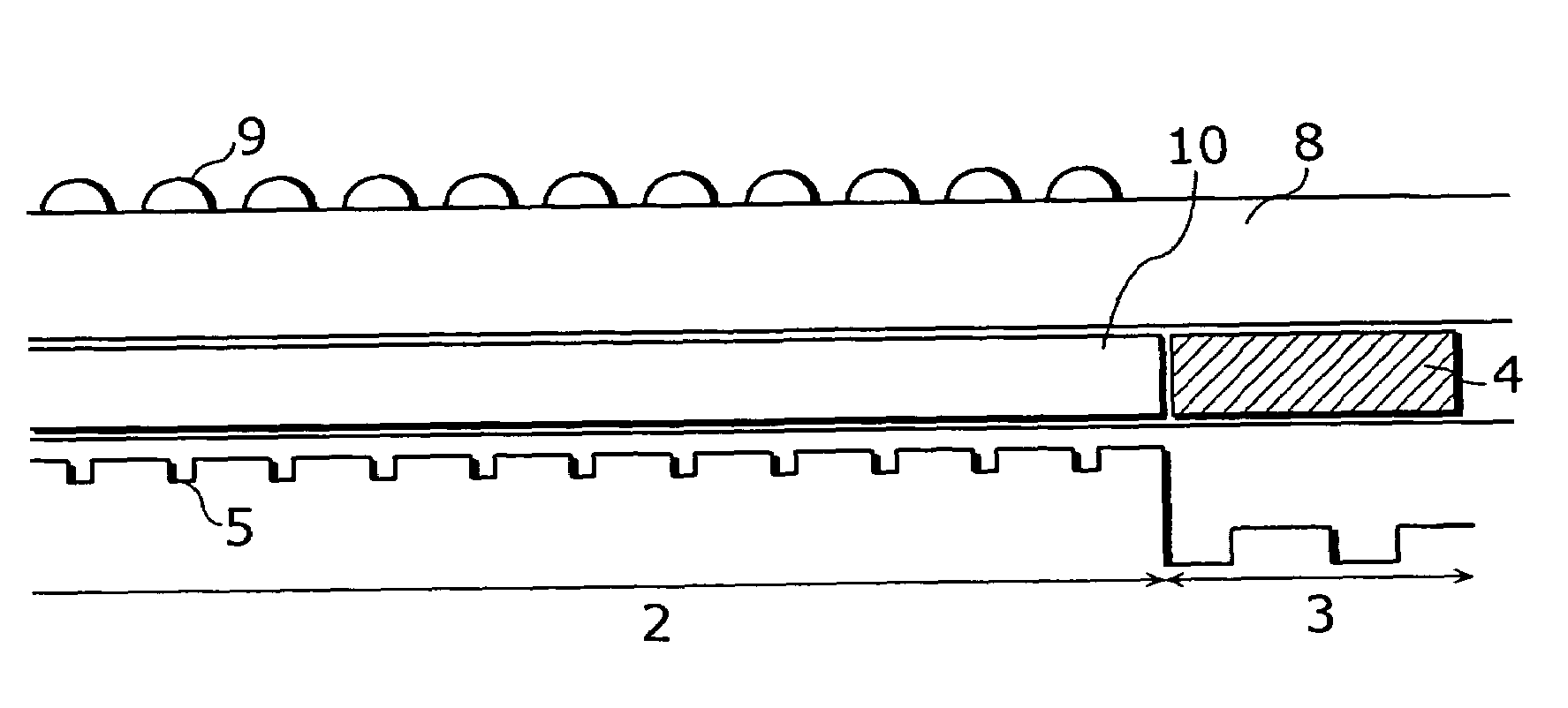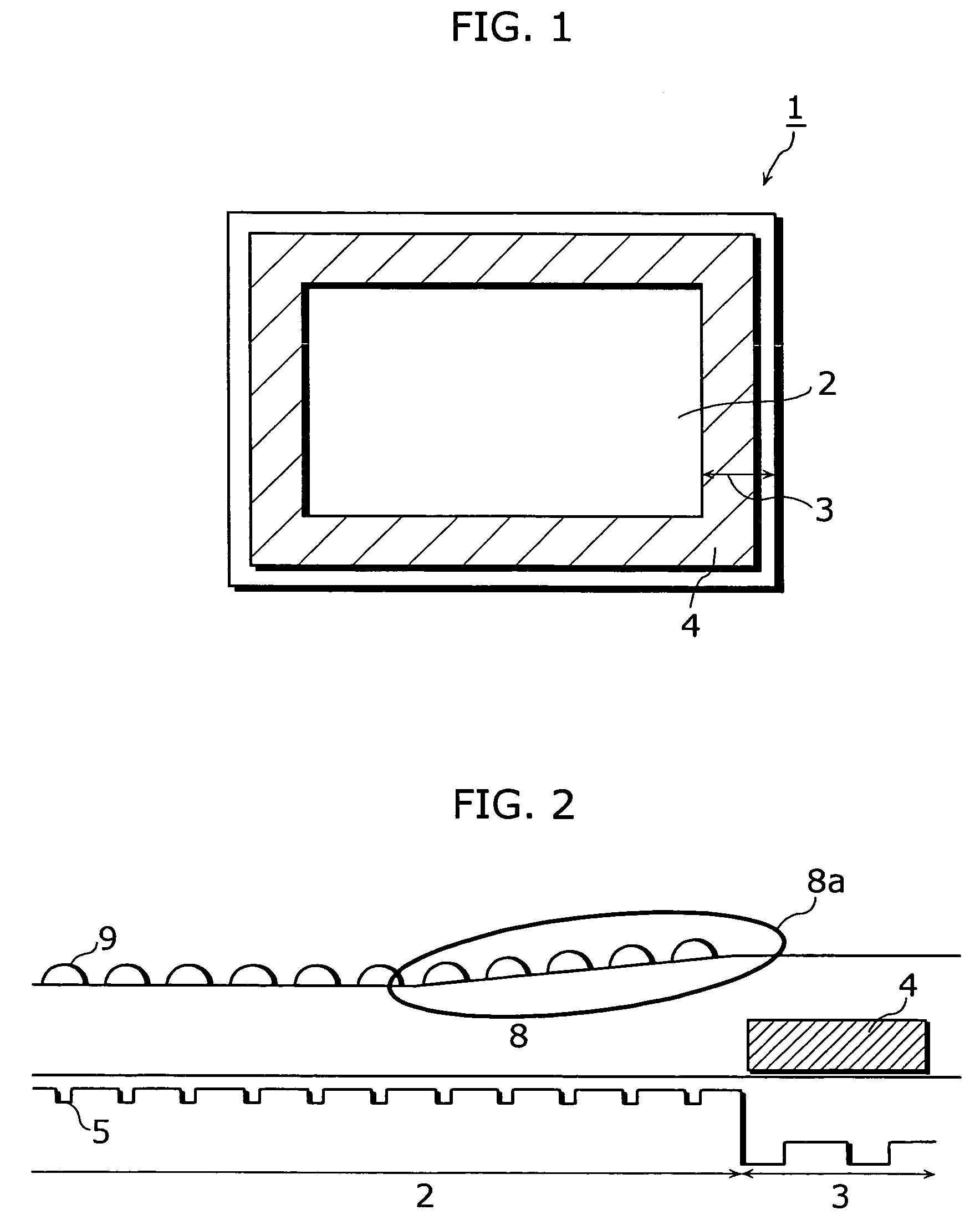Image sensor and manufacturing method of image sensor
a manufacturing method and sensor technology, applied in the field of image sensor manufacturing method, can solve the problems of degrading image quality, uneven sensitivity, degrading image quality, etc., and achieve the effect of avoiding flares and less uneven sensitivity
- Summary
- Abstract
- Description
- Claims
- Application Information
AI Technical Summary
Benefits of technology
Problems solved by technology
Method used
Image
Examples
second embodiment
(Second Embodiment)
[0062]FIG. 4A–FIG. 4C show section views of the image sensor according to the second embodiment in the order of the manufacturing processes. While the transparent film 10 is formed after the formation of the lightproof film 4 according to the manufacturing method in FIG. 3, the lightproof film 4 is formed after the formation of the transparent film 10 in FIG. 4.
[0063]The manufacturing processes according to the second embodiment will be explained in the order of (101a)–(106a) as follows. However, the same processes as the first embodiment will be omitted, and the different processes will be mainly explained.
[0064](101a) The wiring area 3 is flattened in the same manner as (101).
[0065](102a) The transparent film 10 is formed on the imaging area 2 in the same manner as (104). FIG. 4A is a section view of this formation.
[0066](103a) The colorable photoresist of the same thickness (0.3–0.9 μm) as the transparent film is formed on the wiring area in the same manner as ...
third embodiment
(Third Embodiment)
[0072]FIG. 5A–FIG. 5B show section views of the image sensor according to the third embodiment in the order of the manufacturing processes. The manufacturing processes according to the third embodiment will be explained in the order of (901)–(905) as follows.
[0073](901) The wiring area 3 is flattened in the same manner as (101).
[0074](902) The flat film (the transparent film 8) for forming micro lenses on top is applied (0.3–5.0 μm).
[0075](903) The micro lenses 9 are formed. FIG. 5A is a section view of this formation.
[0076](904) Over the wiring area 3, the colorable photoresist is formed by applying it (0.3–0.9 μm), exposing it to light, and developing it. The photoresist can be either of a negative type or a positive type.
[0077](905) The colorable photoresist is colored black (Black). Thus, the lightproof film 4 is formed. FIG. 5B shows the section view of this formation.
[0078]In this manner, the lightproof film 4 is formed on the flat film (the transparent film ...
fourth embodiment
(Fourth Embodiment)
[0109]FIG. 7A–FIG. 7B show the section views of the image sensor according to the fourth embodiment in the order of the manufacturing processes. The manufacturing processes of the present embodiment will be explained in the order of (501)–(505).
[0110](501) On the wiring area 3, the colorable photoresist is formed by applying it (0.3–0.9 μm), exposing it to light, and developing it so as to flatten the top surface of the wiring area 3. The photoresist can be either of a negative type or a positive type.
[0111](502) The colorable photoresist is colored black (Black). Thus, the lightproof film 4 is formed. FIG. 7A shows the section view of this formation.
[0112](503) On Black and the imaging area 2, the flat film (the transparent film 8) for forming micro lenses on top is formed (0.3–5.0 μm).
[0113](504) The micro lenses are formed. FIG. 7B shows the section view of this formation.
[0114]As described above, according to the image sensor of the fourth embodiment, i) the l...
PUM
 Login to View More
Login to View More Abstract
Description
Claims
Application Information
 Login to View More
Login to View More - R&D
- Intellectual Property
- Life Sciences
- Materials
- Tech Scout
- Unparalleled Data Quality
- Higher Quality Content
- 60% Fewer Hallucinations
Browse by: Latest US Patents, China's latest patents, Technical Efficacy Thesaurus, Application Domain, Technology Topic, Popular Technical Reports.
© 2025 PatSnap. All rights reserved.Legal|Privacy policy|Modern Slavery Act Transparency Statement|Sitemap|About US| Contact US: help@patsnap.com



